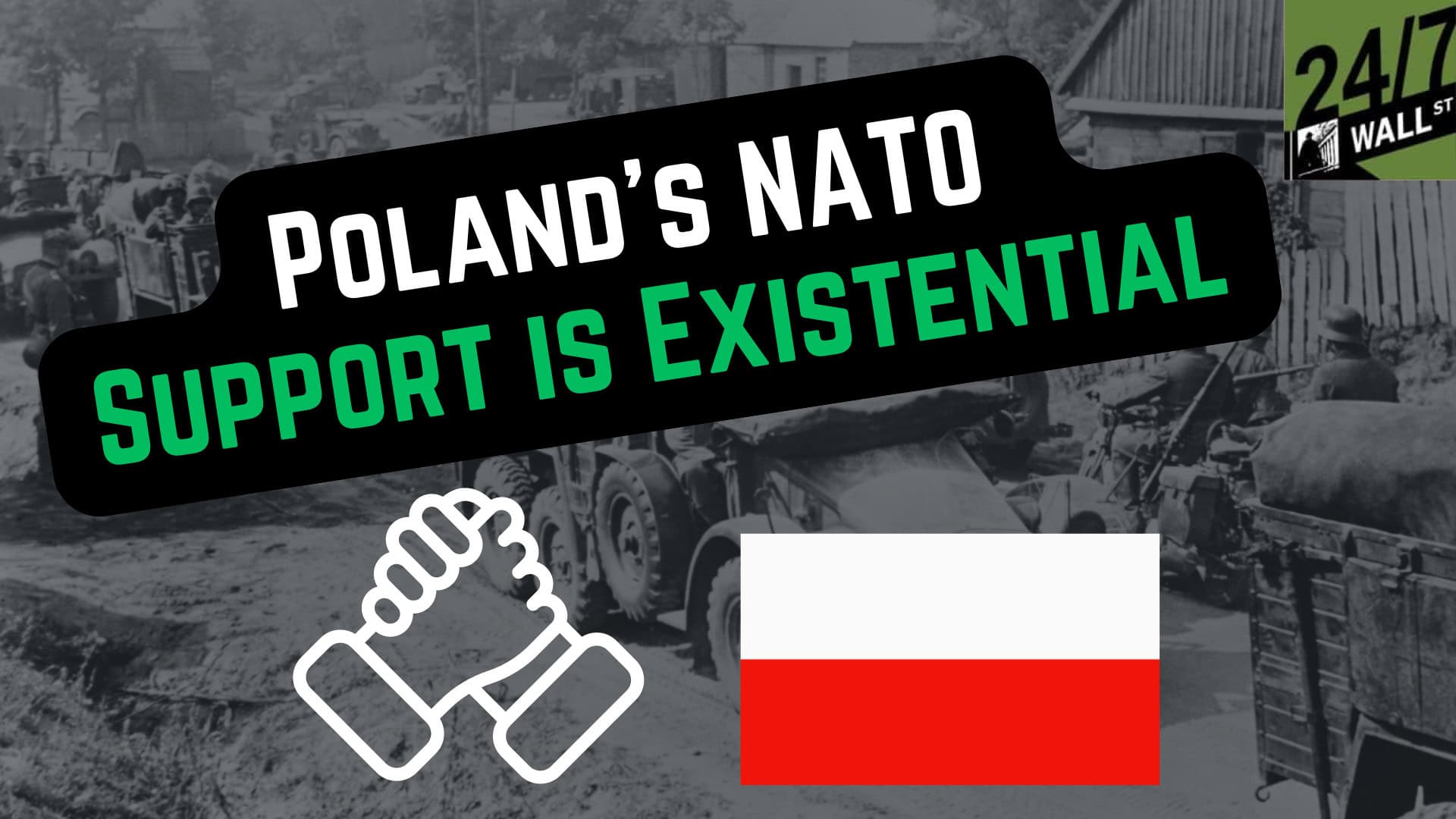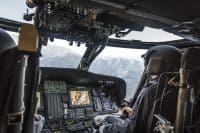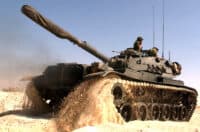
Key Points:
- Poland has doubled its military size and exceeds NATO defense spending targets.
- Its strategic location and history of invasions fuel strong NATO support.
- Poland has fully met its aid commitments to Ukraine, highlighting its proactive role.
- Also: The smart money is looking past this election and towards what may be the biggest investment opportunity of our lifetime. Learn about ‘The Next Nvidia’ today to see why.
Austin Smith and Michael Muir discuss Poland’s significant contributions to NATO, emphasizing the country’s historical context and strategic importance. Poland, having faced multiple invasions and loss of statehood in its history, is acutely aware of the threats from external aggression. This has driven Poland to double the size of its armed forces and spend more than twice the required GDP percentage on defense. Poland’s strategic location, bordering Russia’s Kaliningrad, Belarus, and Ukraine, makes it a critical NATO member, particularly in the context of the ongoing conflict in Ukraine. Poland has fulfilled all its commitments to NATO and Ukraine, supplying old Soviet-era equipment crucial in the early stages of the war, and continues to strengthen its military capabilities.
Watch the Video
Edited Video Transcript:
Interesting.
Let’s shift a little bit to the other side of the spectrum.
I’d like to talk about Poland now.
You know, this is a country that on a relative basis is doing the most for NATO.
And we understand why, given their history and their loss of state, you know, NATO very much being, you know, to Poland’s benefit.
So what is Poland’s current relationship with NATO?
What are they doing?
And talk to me about their strategic value to that organization.
Sure.
I mean, you can’t really talk about Poland and NATO without getting into the history.
And we don’t need to go into great detail here, but it is worth pointing out that Poland has lost its entire existence more than once in its history and regained it.
So they’re acutely aware of the threat of external aggression.
If you look at the establishment of the Second Polish Republic, which took place in 1919, what they had to do from the very beginning, that was a product of the Treaty of Versailles.
So they regained statehood in 1919.
And then to their west, they have a hostile Germany.
To their east, they have a hostile Soviet Union.
And they’re surrounded by neighbors that aren’t particularly well disposed to them either.
They fought six wars between 1919 and 1920 just to establish their borders.
And they even beat off an invasion by the Soviet Union in 1920.
So they were always up against it.
They were in an impossible situation.
They did everything they possibly could to maintain sovereignty.
But ultimately, in 1939, they were overrun by the Third Reich and by the Soviet Union.
So that painful experience, I think, is present in most of what Poland does today.
It’s kind of a prevailing sentiment of that will never happen to us again.
We’ll take matters, you know, we’ll handle our own destiny.
So under Soviet dominion, that wasn’t always, you know, there was a lot of turmoil, a lot of difficulty there.
You know, the Warsaw Pact, which is obviously Poland’s capital city where the name comes from, they were the second largest military in what was basically the eastern answer to NATO.
But when the Soviet Union began to collapse in the late 80s, Poland wanted to pivot away from the east and towards the west.
So even when they were still technically a member of the Warsaw Pact, that’s when they first started exploring NATO membership.
Back in 1989, and NATO was quite receptive to that.
And then after the Warsaw Pact dissolved in 1991, Poland started taking definitive steps to being part of NATO.
And in 1994, when Bill Clinton visited Warsaw, he said, reflecting most of other NATO allies’ position, it was a matter of when and how, not if Poland and other Warsaw Pact nations would become part of NATO.
So if we consider what Poland offers, first of all, it’s a very strategically well-placed strategic position.
It is very conducive to forward deployment against the Soviet Union or against Russia at this point.
It’s closely linked to the Baltic states.
There are actually plans which have been derailed, funny choice of words, to build a railway linking Poland, Finland, and the Baltic states.
So it just offers that really important strategic position.
And militarily, they’ve been building up significantly.
They’ve doubled the size of their armed forces in the last ten years, even five years.
Their military spending as a percentage of GDP is 4.12, which is more than twice the obligations that were agreed to in 2014.
So they’re going way above and beyond.
And they’re divesting from their old Soviet arsenal to a modern one.
Their main partners in arms procurement are the United States and South Korea too.
They’ve gone from about 100,000 soldiers to 216,000, and they’re going to go to about 300,000, 250,000 regular supported by 50,000 reservists.
That would make them the third.
Well, they are currently, and they’ll cement their place as the third largest military in NATO.
So they’re really building up their military strength is the key takeaway there.
Yeah, it’s really easy to see why, you know, given Poland’s troubled history.
I mean, I don’t want to overstate this, but it feels every conflict like this may feel existential to them, given their past history of invasion.
And, you know, so we completely understand why, you know, that they’re maybe the polar opposite to Iceland as far as NATO.
Bring up a geographic location, just look at the countries, especially in the east, that Poland borders.
There is the, you know, the little Russian exclave Kaliningrad.
But there’s also Belarus, which is at this point, it’s effectively a Russian satellite.
You know, a lot of troops that took part in the Russian troops that took part in the invasion of Ukraine moved through Belarus.
And of course, Poland borders Ukraine.
So this conflict is essentially going on in their backyard.
So obviously, they’re going to be very concerned by that.
Another thing that marks Poland out from a lot of other nations is when we talk about aid to Ukraine, they have a lot of NATO or EU members have pledged aid, but it hasn’t arrived yet.
Everything that Poland said they were going to send, they have now sent.
It has slowed down since then because they’re now concentrating on their own security.
And there was a grain dispute last year, which they’re still working through, but they fulfilled all their obligations.
They’ve met all of the pledges that they were going to give to Ukraine.
And another thing we should point out, I think we’ve talked about it before, but to really underline how important Poland was to Ukraine, especially in the first year of the war, when they had to take whatever equipment they could get, because Poland has such a large stockpile of old Soviet era armor and jets that Ukraine already knew how to use.
So that was just very useful in those first few months.
So yeah, Poland’s really going above and beyond.
And not to say anything of the very specific role they’ve played with the F-16s in particular and procuring them on Ukraine’s behalf.
Get Ready To Retire (Sponsored)
Start by taking a quick retirement quiz from SmartAsset that will match you with up to 3 financial advisors that serve your area and beyond in 5 minutes, or less.
Each advisor has been vetted by SmartAsset and is held to a fiduciary standard to act in your best interests.
Here’s how it works:
1. Answer SmartAsset advisor match quiz
2. Review your pre-screened matches at your leisure. Check out the advisors’ profiles.
3. Speak with advisors at no cost to you. Have an introductory call on the phone or introduction in person and choose whom to work with in the future
Thank you for reading! Have some feedback for us?
Contact the 24/7 Wall St. editorial team.




